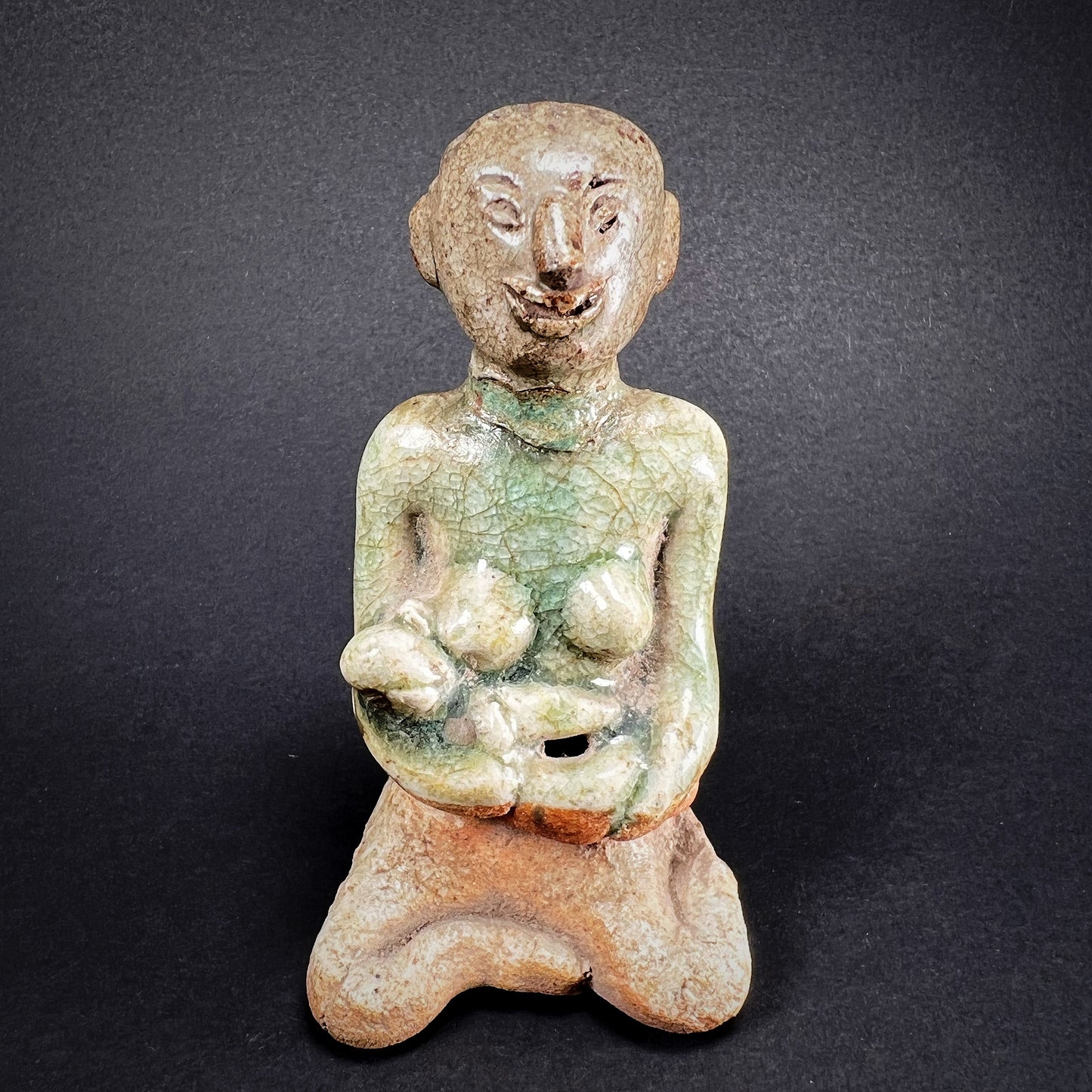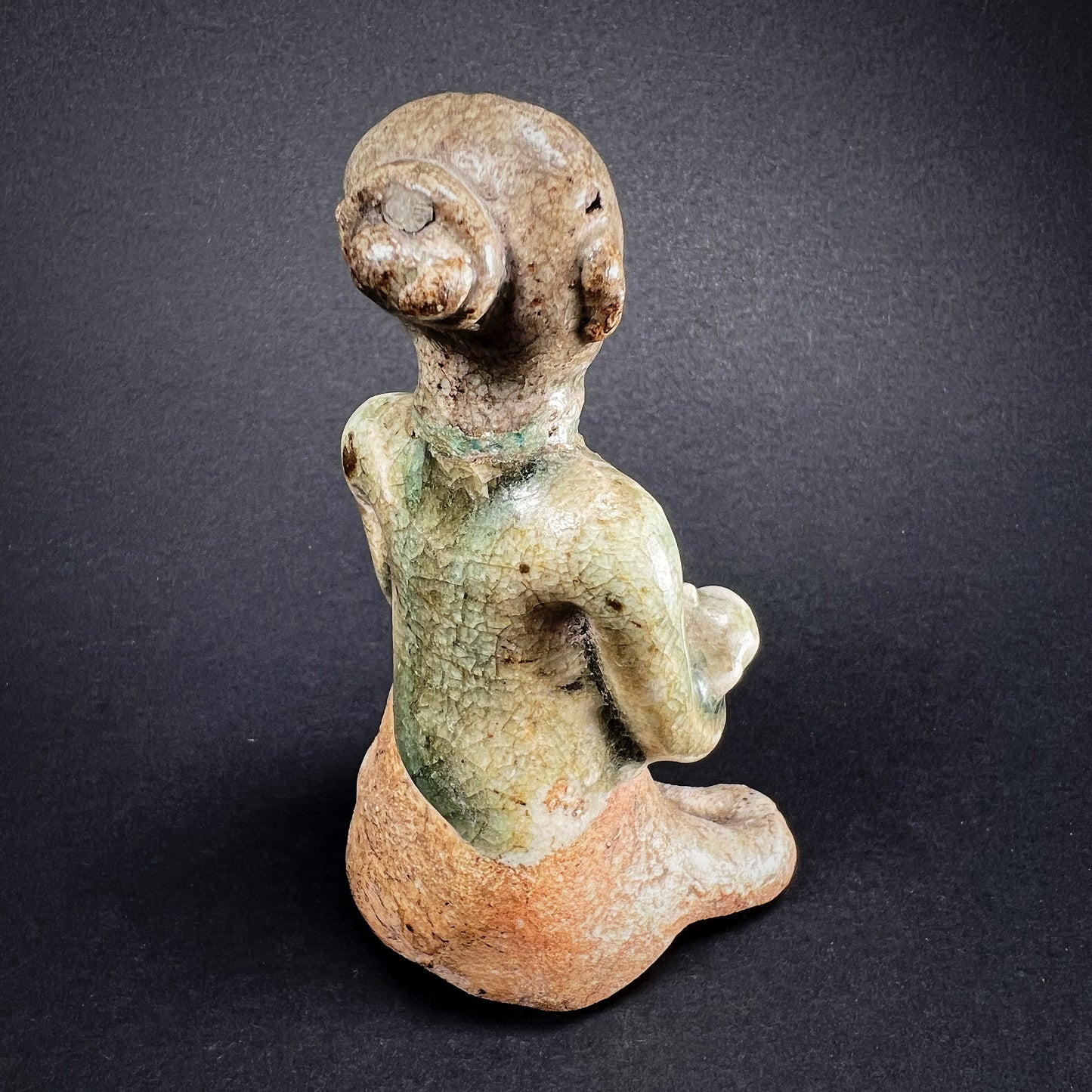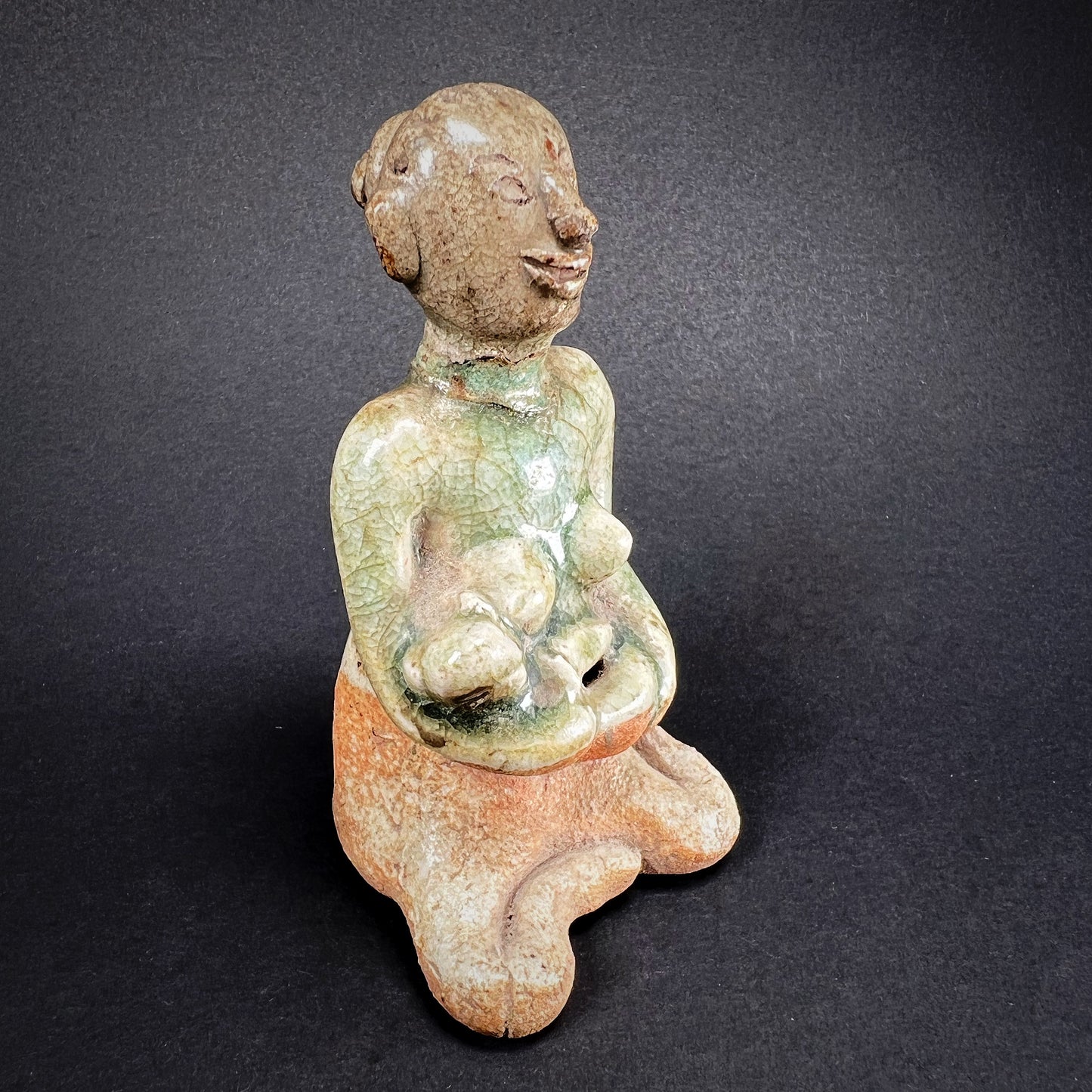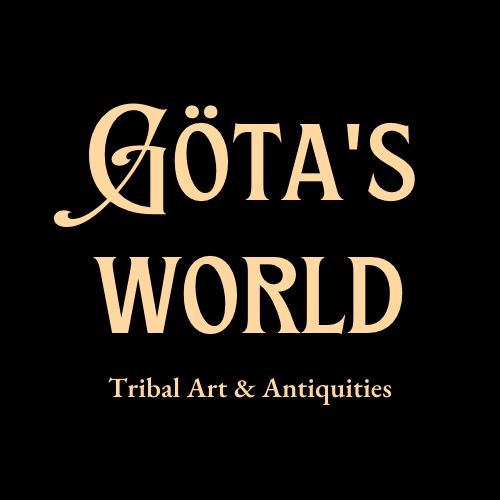Thai Si Satchanalai Stoneware Tukatha Figure
Thai Si Satchanalai Stoneware Tukatha Figure
Couldn't load pickup availability
Sukhothai Kingdom or Ayutthaya Period, c.1550 AD, Sukhothai Province, Si Satchanalai, Pa Yang Kilns, Thailand
This enchanting Tukatha (also called tuton sia kaborn or tukata sia kaban) stoneware figurine, delicately crafted and finished with a crackled celadon glaze, depicts a young mother seated in the traditional Thai position of honor, her feet gracefully tucked behind her. The figure cradles a baby in her arms, embodying themes of maternity and nurturing.Tukatha figurines were cherished as toys for young girls, designed to help them learn and embrace the role of motherhood. They also played a symbolic role in rituals connected to rain and fertility, embodying the essence of care and creation. This specific figure originates from the Pa Yang kilns in Si Satchanalai and represents a unique tradition of figurative ceramics from the late production period around the 16th century.
The celadon glaze, known as Kai Ka, highlights the soft green hue achieved by reduction firing, a technique introduced to Thailand from China in the 14th century. The glaze beautifully complements the fine details of the mother and child, while the inherent imperfections of Si Satchanalai clay—such as black, red, or silvery inclusions—attest to its local origins and the distinct craftsmanship of the region. Sawankhalok and Si Satchanalai kilns were vital hubs of ceramic production during the Sukhothai Kingdom (1238–1438) and later into the Ayutthaya period. Their creations, ranging from practical vessels to decorative figures, were exported across Southeast Asia, Japan, and the Middle East, filling a global demand gap created by the Ming dynasty’s export ban (1371–1509).
Interestingly, many Tukatha figurines are discovered with missing heads, leading to theories of ritualistic sacrificial practices. However, structural weaknesses in the joint between the head and body likely account for their frequent detachment. This figurine, with its harmonious blend of cultural symbolism and artistic refinement, stands as a testament to the ingenuity and creativity of the Si Satchanalai artisans.
Good condition. Age-related wear. Broken head later re-attached. Glazing defects and firing flaws. Beautiful patina. Size approx. 9,5cm x 4,9cm x 4,8cm.
Provenance: Finnish private collection
For a similar examples see:
Tukatha figurine, Horniman Museum, Accession Number: 2.2.49/1e (https://www.horniman.ac.uk/object/2.2.49/1e/)
Figure, The British Museum, Accession Number: 2010,3007.8 (https://www.britishmuseum.org/collection/object/A_2010-3007-8)
Figurine, Asian Civilisations Museum, Accession Number: 1992-00816 (https://www.roots.gov.sg/Collection-Landing/listing/1002553)
References and further reading:
Thai Ceramic Art - The Three Religions, J.D. van Oenen & N. Guerin, Sun Tree Publishing, 2005, p. 262.
Ceramics of Seduction, Glazed Wares from Southeast Asia, Dawn Rooney, River Books Press Dist A C, 2013.
The Ceramic Wares of Siam, Charles Nelson Spinks, Bangkok Siam Society, 1978, pp. 86-88.
The ceramics of southeast Asia: Their dating and identification (2nd ed.), R.M. Brown, Singapore, Singapore: Oxford Univesity Press, 1988.
Last shipments from the Thai Sawankhalok Kilns, R.M. Brown, Art from Thailand, pp. 93-103. Mumbai, Marg Publications, 1999.
A Field Guide to Glazed Thai Ceramics, Dawn F. Rooney, Asian Perspectives, Vol 28. No 2, pp. 125-144, University of Hawai'i Press, 1988-89.



-
Shipping
The shipment will be prepared in the course of 3-5 days and dispatched via Posti Group Oyj or purchased item(s) can be picked up from our shop during the store's opening hours (Tarkk’ampujankatu 4, 00140, Helsinki, Finland). Within the Finland, all items are shipped via Posti Group Oyj unless otherwise requested. We pack the items carefully and mainly in recycled materials because we want to save nature. You will receive the tracking number for your items by e-mail.
-
Returns
Returns and exchange will be accepted within fourteen days (14) of receipt at the purchaser’s cost to include freight and packaging. Items must be returned in the same condition as when they were shipped, and will not be accepted if damaged or altered in any way. Please inform us via email (info@gotanmaailma.fi) or by calling +358408408352 before sending. We do not accept returns more than 14 days after delivery.



